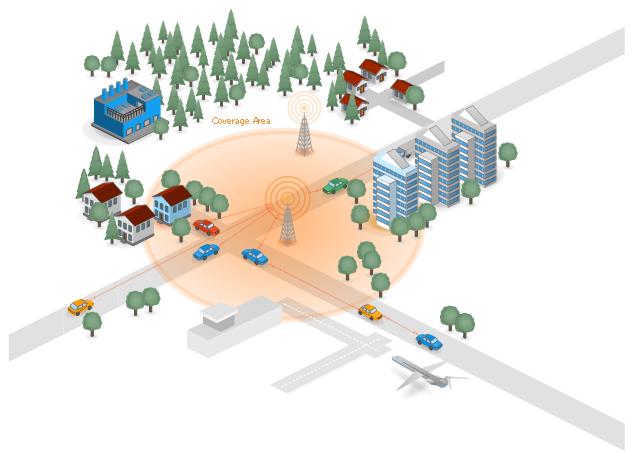"Vehicular Communication Systems are an emerging type of networks in which vehicles and roadside units are the communicating nodes; providing each other with information, such as safety warnings and traffic information. As a cooperative approach, vehicular communication systems can be more effective in avoiding accidents and traffic congestions than if each vehicle tries to solve these problems individually.
Generally vehicular networks are considered to contain two types of nodes; vehicles and roadside stations. Both are Dedicated Short Range Communications (DSRC) devices. DSRC works in 5.9 GHz band with bandwidth of 75 MHz and approximate range of 1000m. The network should support both private data communications and public (mainly safety) communications but higher priority is given to public communications. Vehicular communications is usually developed as a part of Intelligent Transport Systems (ITS). ITS seeks to achieve safety and productivity through intelligent transportation which integrates communication between mobile and fixed nodes. To this end ITS heavily relies on wired and wireless communications." [Vehicular communication systems. Wikipedia]
The example "Cooperative vehicular delay-tolerant network" was created using the ConceptDraw PRO diagramming and vector drawing software extended with the Vehicular Networking solution from the Computer and Networks area of ConceptDraw Solution Park.
Generally vehicular networks are considered to contain two types of nodes; vehicles and roadside stations. Both are Dedicated Short Range Communications (DSRC) devices. DSRC works in 5.9 GHz band with bandwidth of 75 MHz and approximate range of 1000m. The network should support both private data communications and public (mainly safety) communications but higher priority is given to public communications. Vehicular communications is usually developed as a part of Intelligent Transport Systems (ITS). ITS seeks to achieve safety and productivity through intelligent transportation which integrates communication between mobile and fixed nodes. To this end ITS heavily relies on wired and wireless communications." [Vehicular communication systems. Wikipedia]
The example "Cooperative vehicular delay-tolerant network" was created using the ConceptDraw PRO diagramming and vector drawing software extended with the Vehicular Networking solution from the Computer and Networks area of ConceptDraw Solution Park.
- Design elements - Telecommunication networks ...
- Phone networks. Computer and Network Examples | Mobile satellite ...
- Mobile satellite communication network diagram | Hybrid satellite ...
- Phone networks. Computer and Network Examples | Aerospace and ...
- Hybrid satellite and common carrier network diagram | Satellite ...
- Mobile satellite TV network diagram | Phone networks. Computer ...
- How To use Switches in Network Diagram | Cisco Switches and ...
- Wireless broadband network diagram | Illustrate the Computer ...
- Call center network diagram | Telecommunication Network ...
- Cell Diagram
- Network Architecture | Mobile cloud architecture diagram ...
- State Diagram Example - Online Store | Example of DFD for Online ...
- Call center network diagram | Telecommunication Network ...
- Independent regional networks diagram | Inter-vehicle ...
- Computer network system design diagram | Design elements ...
- Office equipment - Vector stencils library | Building Drawing ...
- Computers and network isometric - Vector stencils library | 3D ...
- Cellular Communication Diagram
- Building Office Tower Visio
- Computers and network isometric - Vector stencils library ...
